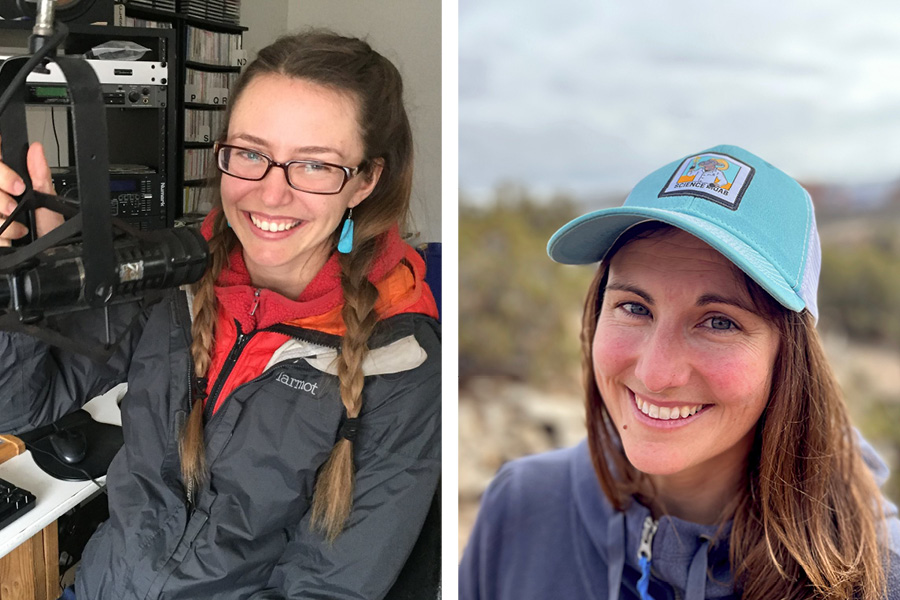Science Moab began in 2017 as a passion project of Kristina Young, then a U.S. Geological Survey scientist.
“Working with the U.S. Geological Survey, I saw the need to recognize local work and to let people know what amazing science was going on here early on,” said Young. “Then Science Moab grew and grew.”
The nonprofit has grown into a vibrant organization that serves the Moab community by providing science education and outreach programs as well as beloved social events like Science On Tap. The organization offers a range of events and programs, including a monthly podcast, the School to Science program for local students, and Science Certified, which provides customized training on local ecology and geology to guides.
Young said that, not so long ago, she would joke about someday having paid staff—now that dream, like many others, is a reality.
“Science Moab has been an amazing journey for everybody involved,” said Young. “It started as this incredible volunteer passion project and grew into this really exciting organization that the community has really responded to, and we’ve been able to serve the community in a lot of different ways.”
Young said that now that Science Moab has put down roots in the community, she’s stepping back from her role as executive director.
“It’s time to put it into the hands of somebody who can grow it, who has expertise in the nonprofit field and wants to continue to fulfill the mission that Science Moab has set out,” said Young. “That is absolutely Carrie.”
Carrie Schwartz, the new executive director, started as a volunteer for Science Moab.
“I was always kind of in awe of Science Moab before I got involved. I really nerded out to people about how cool the program was,” said Schwartz. “I felt so connected to what Kristina was trying to do.”
The majority of Schwartz’s career has been in community education and working with organizations like gardens, museums and public lands including the National Park Service and the National Museum of Wildlife Art to involve the public in art and science. She joined Science Moab staff as the School to Science program director in May of 2021.
Young recognized the importance of Schwartz’s role in the organization and how it prepared her to lead Science Moab.
“Carrie has led the most logistically challenging and complex of the programs which involves a lot of different people,” said Young. “And she’s done it so seamlessly and so exceptionally that the executive role is the next step, really.”
Science Moab’s student and guide programs, School to Science and Science Certified, are both growing as well. While Young and Schwartz are both cautious about straining the organization’s capacity, they say they can see these programs scaling to other places around the Colorado Plateau.
For now, though, Schwartz is drawing on her background with nonprofits to focus on Science Moab’s stability for the future after an intense phase of growth.
“Moving to an incorporated 501(c)(3) [nonprofit] organization means putting some structure behind this,” said Schwartz. “I love the less-sexy side of things. I’m really excited about watching the organization mature, increasing our financial stability and building on the incredible foundation we have.”
While the programs have expanded, the mission of Science Moab has never changed, Schwartz says.
“We’re still trying to figure out all these fun and exciting ways to build bridges between the science that’s happening here and the communities that live here,” said Schwartz. “I think what feels different is all of a sudden we can dream bigger than we ever realized we might be able to at first.”
Young said that she was returning to research science, while staying on the Science Moab Board of Directors.
“You know, I’ve never really given up my passion for doing the actual science, the research on the ground,” said Young.
“I’ll never really quite have the right words to express my admiration for everything that she’s built,” said Schwartz. “I’m just really excited to see what this team of people—not just our staff, but our board volunteers, all of our partners and the huge community supporting the work of Science Moab—I’m very excited to see where that takes us in the years to come.”




